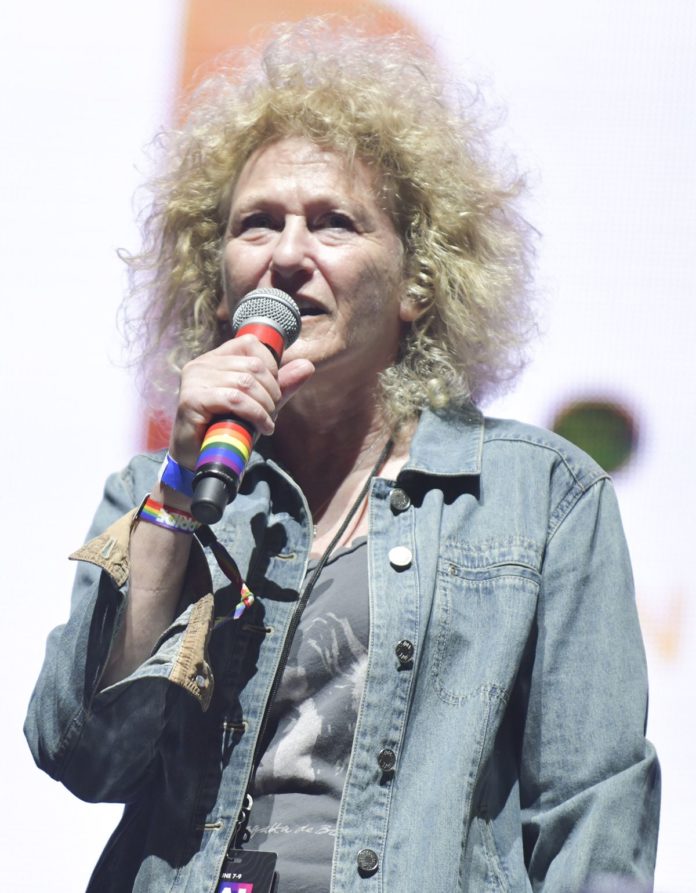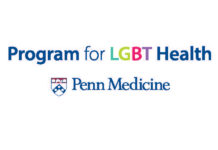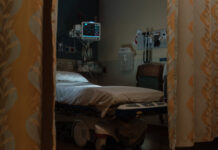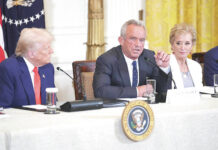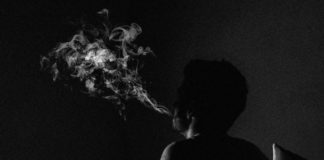A significant COVID-19 milestone took place in West Hollywood on October 7: The incorporated city inside Los Angeles County began requiring at least one dose of a COVID vaccine to enter the indoor sections of restaurants, as well as bars, clubs, gyms, and retail establishments. Negative COVID-19 tests will not be accepted. On November 4, full vaccination proof will be required in West Hollywood for anyone 18 and older dining indoors, or else people will have to order takeout or opt for a patio table. This pandemic-related forward thinking should come as no surprise: It is only the most recent example of West Hollywood’s leadership on issues of public welfare since its incorporation as a city in the mid-1980s.
West Hollywood’s emergency health order is similar to an ordinance passed by the Los Angeles City Council on October 6. And although LA County’s health order requiring bars and nightclubs to ask for vaccine proof also began on October 7, cities like West Hollywood and LA have passed their own mandates for dining and working in restaurants. Those visiting restaurants like Ardor or WeHo Bistro, or catching a show at venues like the Roxy and the Viper Room, will notice signs acknowledging the new policy. Unless workers can secure a medical or religious exemption or subject themselves to frequent and periodic testing, employees must also be fully vaccinated by the November 4 deadline. Violators will be fined and cited.
:no_upscale()/cdn.vox-cdn.com/uploads/chorus_asset/file/22927345/1154556694.jpg)
Businesses like the Abbey were on board with these regulations well before West Hollywood’s health order passed. Since as early as July 30, drinkers and diners at the iconic West Hollywood restaurant and club have been required to show proof of one vaccine to enter. An Abbey spokesperson tells Eater LA that business slowed over the first few weeks of vaccine requirements, but eventually returned to normal.
West Hollywood Mayor Lauren Meister says her city’s vaccine mandate is one of the toughest in the nation, but historically, it’s no outlier; the city has always taken more aggressive approaches to health care mandates. “The City of West Hollywood has always been the vanguard, recognized nationwide as a leader on a wide variety of social issues,” says Meister. “Through the coronavirus pandemic, we’ve provided more than $1.5 million in rental assistance, were one of the only municipalities in the country to implement mask requirements with administrative fees for noncompliance, and now have one of the strictest vaccine mandates in the country. Continuing to keep our community safe and healthy is the city’s highest priority.”
West Hollywood’s proactive policies mirror a history in which it has established itself as a city of firsts by creating its own positions, policies, programs, and laws tackling social and health issues well before most cities had a chance to introduce the subject. West Hollywood — along with San Francisco — was early to establish California’s strictest rules surrounding COVID-19. During the early summer, West Hollywood’s Council directed its city attorney to look into and draft a report on vaccine mandates. While the Los Angeles City Council passed its own proof of vaccination ordinance on October 6, West Hollywood started the process back in mid-July, weeks before New York City Mayor Bill de Blasio announced businesses would require proof in order to dine indoors in August.
When West Hollywood was founded in 1984, officials immediately initiated social programs to address the impact of the HIV/AIDS epidemic, rent control, and community-building. These decades-long social programs are specifically for LGBTQ women, seniors, teens, and those with families. The programs include rent stabilization ordinances and affordable housing policies, and according to West Hollywood strategic initiatives manager Corri Planck, could be mirrored by other government agencies. “If all other communities had been doing that kind of housing policy, we might be looking at a different kind of experience in our greater LA region than we are right now in terms of housing affordability and homelessness,” says Planck.
West Hollywood also paved a pathway with establishing cannabis dispensaries for medicinal use. In the 1980s, the HIV/AIDS epidemic significantly impacted West Hollywood’s queer population, and the city government responded by deepening a commitment to medical-use cannabis, which was approved statewide in 1996.
“For decades West Hollywood has been an innovator and risk-taker in the cannabis space, including being one of the first cities to permit medical cannabis dispensaries in the early 2000s,” says John Leonard, the city’s community and legislative affairs manager. The original four medical dispensaries — MedMen, Alternative Herbal Health Services, Los Angeles Patients and Caregivers Group, and Zen Healing Collective — are all still in operation today.
In 2016, as legal recreational cannabis consumption began to be embraced in the U.S., West Hollywood started tooling with the idea of becoming a destination for cannabis consumers. City officials fast-tracked the process for those looking to open cannabis shops, pot delivery services, and consumption lounges after California voters passed Proposition 64 in 2017. What amassed over this period is what operators describe as the “green rush,” where opportunists spent tens of thousands of dollars to apply for a coveted permit that would allow consumers to smoke or vape cannabis, or eat THC-infused foods or beverages in a designated lounge. In 2019, West Hollywood officials approved applications and the Original Cannabis Cafe (originally called Lowell Cafe) opened as California’s, and the nation’s, first cannabis consumption lounge. Diners can smoke from a bong, eat an edible, or have a budtender roll a joint tableside at Original Cannabis Cafe, though the venue remains temporarily closed due to the pandemic.
West Hollywood’s cultural institutions were established long before it actually became a city. Because of its status within LA County, the area was able to build a distinctive culture akin to that of San Francisco’s Castro, WeHo’s queer-friendly neighbor to the north. In the period prior to 1984, the neighborhood was able to skirt stricter regulations in incorporated areas of LA County to open adult entertainment venues and welcome gay bars in the 1970s. Some have made an impact beyond Southern California, like the Abbey, which is arguably the best-known queer bar in the country. Iconic West Hollywood clubs like Rage and the Factory have shuttered, but made an indelible impact on queer and dance culture.
Some of LA’s most historic and culturally significant restaurants have been located in West Hollywood as well. Chasen’s, on Beverly Boulevard near Doheny, opened in 1936, becoming a celebrity hotspot where Cary Grant, Humphrey Bogart, and Frank Sinatra were regulars with their own permanent tables. Nancy Reagan and Donna Summer were also known to frequent the place in the ’70s and ’80s; it closed in 1995. Dan Tana’s has been a star magnet since opening in 1967, and remains a popular A-list destination. From 1925 to its completely renovated state today, Formosa Cafe was a legendary Hollywood haunt. Other prominent West Hollywood restaurants include modern Thai eatery Night + Market, Italian-influenced Olivetta, Drake and Justin Bieber favorite Delilah, and perennial paparazzi spot Catch LA.
:no_upscale()/cdn.vox-cdn.com/uploads/chorus_asset/file/19575467/2019_12_22_Olivetta_013.jpg)
Many of West Hollywood’s dining and drinking institutions are still deep in preparation mode to get in compliance with the new health orders; others are upset the annual Halloween Carnaval — which draws hundreds of thousands of people most years — was canceled for the second year in a row in September. The parade’s main stretch on Santa Monica Boulevard is one of the busiest for West Hollywood restaurants, clubs, and bars. Marinate restaurant owner Mat Yuriditsky worries some decisions are impacting his business. “They canceled Halloween when our [infection and hospitalization] numbers are lower than anywhere else in the country,” he says. “They have baseball and football games in stadiums, but we can’t have a parade for Halloween, which is one of our busiest days of the year.” A 2016 economic impact study calculated that West Hollywood brings in $4.2 million of revenue on Halloween, with 36 percent spent on food and drinks.
As West Hollywood restaurant owners and workers contend with navigating a pandemic, keeping their doors open, and adjusting to new health orders, the city continues to lead the way on regulations, well before the county or even the city of LA puts its rules into effect. While this follows a tradition of thinking fast in order to uphold public safety and health, it’s unclear what shorter- and longer-term effects this will have on businesses that rely on busy dining rooms and large events to thrive, and define West Hollywood as the restaurant and nightlife destination it has been for decades.
:no_upscale()/cdn.vox-cdn.com/uploads/chorus_asset/file/22927316/1229727737.jpg)

